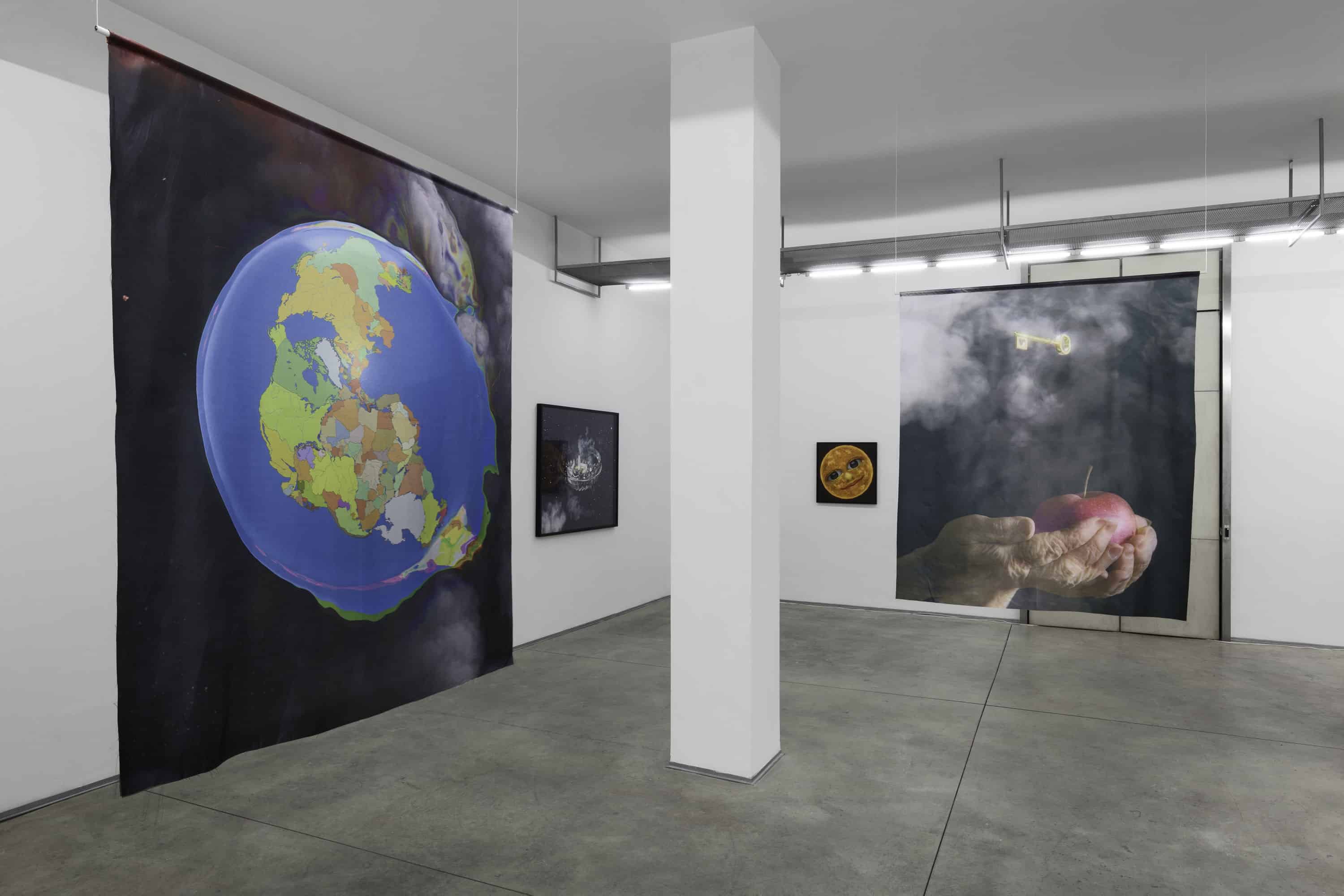The show at Barriera faces the urgent environmental matters that question our individual responsibility towards society.
The artist uses animated images and video clips, combining her vision with acoustic choices that aim at maximizing the impact on visitors’ perception. She intends to bring the public on a hallucinatory journey that overlaps historical references with the poetic sense of interpretation, creating a catastrophic atmosphere on a cosmic scale.

I Call Your Name, exhibition, Associazione Barriera, Photo Cristina Leoncini
The new video Perfect lives (Galileo’s task), exhibited in Barriera’s smaller room, reflects on an experiment that occurred in 1990, during which the space probe Galileo was used by NASA to study Jupiter and its satellites. Through this experiment scientists wanted to verify whether the data sent from Galileo during its journey around our planet would confirm the existence of life on Earth. The film has the structure of a visual essay where the overlapping of images creates a melancholic atmosphere. This dense collage is made of a collection of hundreds of stock videos representing scenes from everyday life that are associated to human activities: “business meetings”, “the contemplation of nature”, “group therapy”, “wedding”, “loneliness”, “crime”, and so on. Such situations have a factitious nature and they seem to problematize the existence of life itself: they are the proof of an illusory and strictly western idea of life.
The Happiest Thought, shown in the adjacent room, is a multimedia work, initially created for the Berliner Festspiele program Immersion as a full-dome projection. On this occasion the work is presented as a sound installation, next to a series of images taken from the video and printed on textile, and several photographic works.
I Call Your Name, exhibition, Associazione Barriera, Photo Cristina Leoncini
I Call Your Name, exhibition, Associazione Barriera, Photo Cristina Leoncini
The title of this work derives from the revelation Einstein had in 1907, while he was meditating on the complex nature of gravity. When, afterwards, the physicist referred to this initial moment of understanding of the properties associated to the lack of gravity he defined it as “the happiest thought of his life”. The work presented at Barriera is an audio essay that gives a poetic reinterpretation of a catastrophic event in the history of planet Earth: the mass extinction in the Permian-Triassic age, during which up to 90% of the planet’s vegetation disappeared. The reason for this devastating event, which occurred over 250 million years ago, are still a mystery. Paleontologists and geologists growingly support the theory according to which its cause is related to a series of cyclical events connected to the increase of carbon dioxide in the atmosphere caused by the activity of volcanoes. In the installation, which recalls a hypnosis session, the spectator is surrounded by the sounds and immersed in the fabled scenery of the forest, populated by animal and vegetal creatures that no longer exist. By weaving sound with images in a sophisticated configuration of emotional and sentimental ties, the installation creates a bewitching environment in which the transposition of this threatening historical fact is set in our uncanny contemporary times – it connects to the future through the present in an exchange of reverberations and alterations.
Written by Sergey Kantsedal
Agnieszak Polska, Starry Sky, 2019 photo collage, 90 x 75 cm, From the series The Happiest Thought
Agnieszka Polska, Pangea, 2019, photo collage, 90 x 75 cm, From the series The Happiest Thought
Agnieszka Polska, Love key, 2019 photo collage, 90 x 75 cm, From the series The Happiest Thought
Agnieszka Polska, Pangea, 2019, photo collage, 90 x 75 cm, From the series The Happiest Thought












